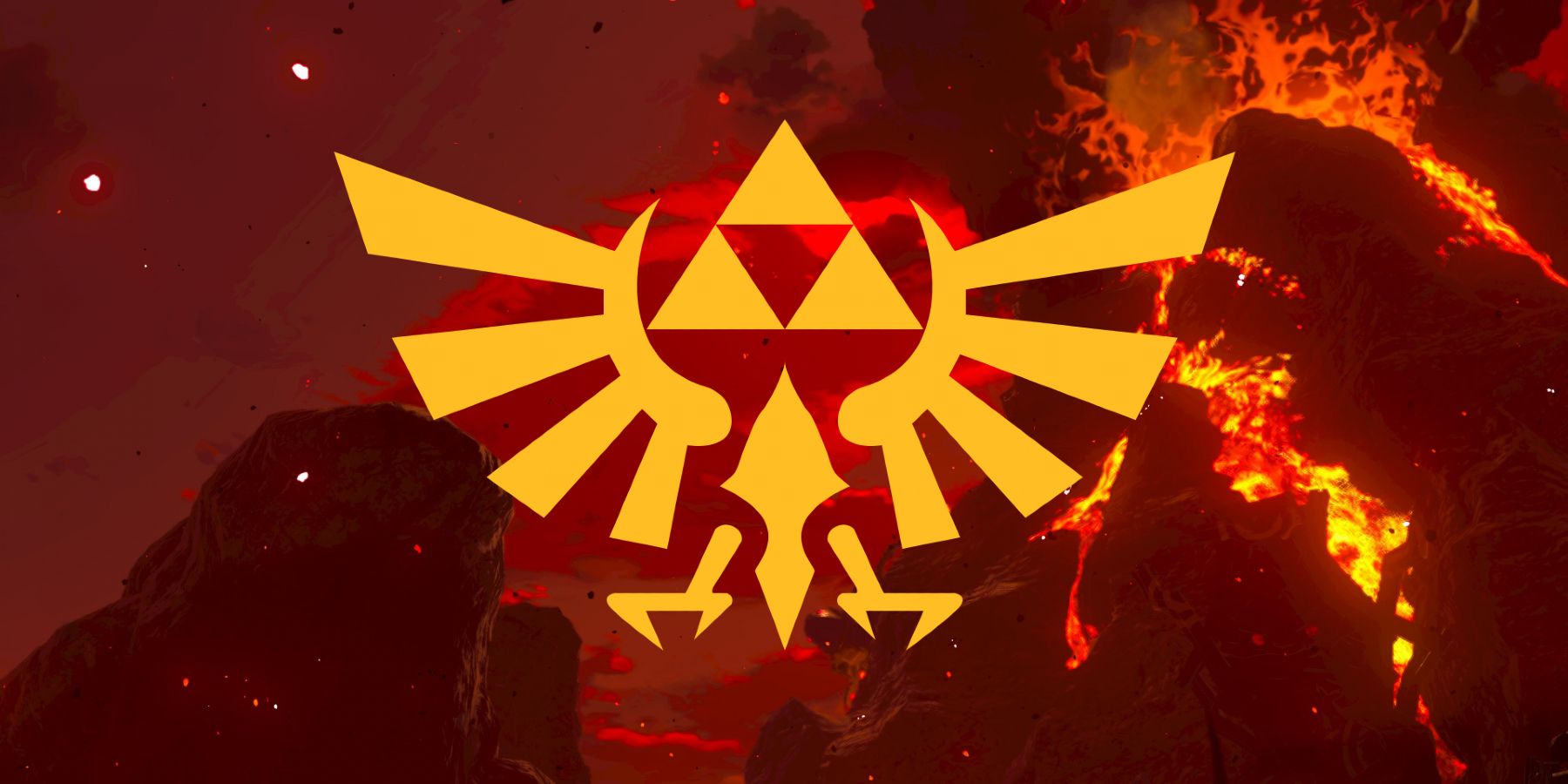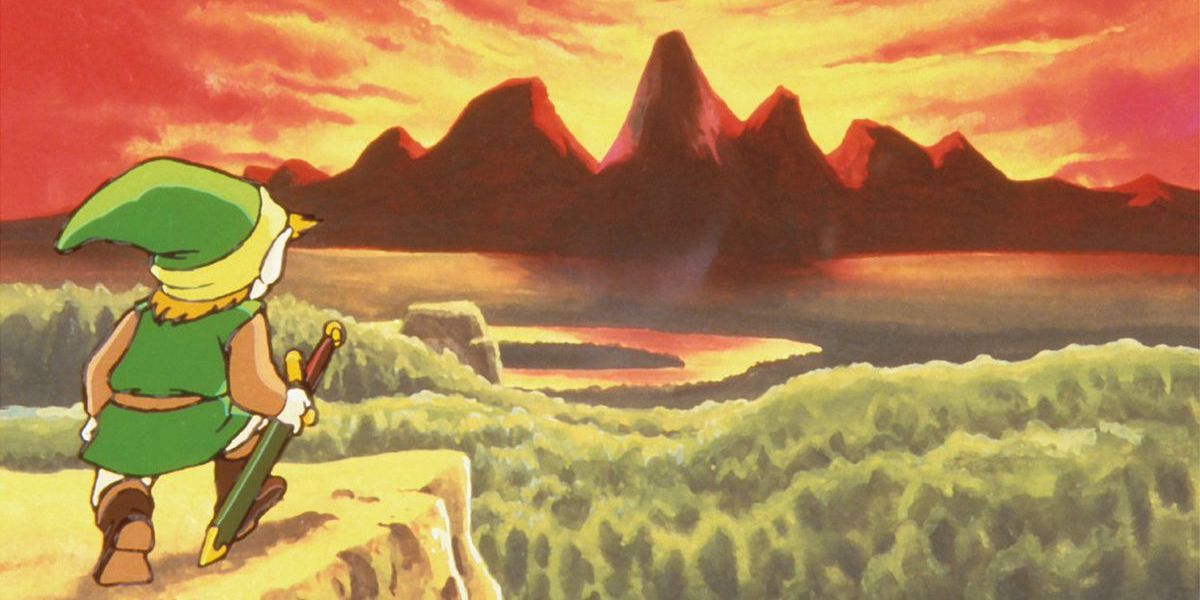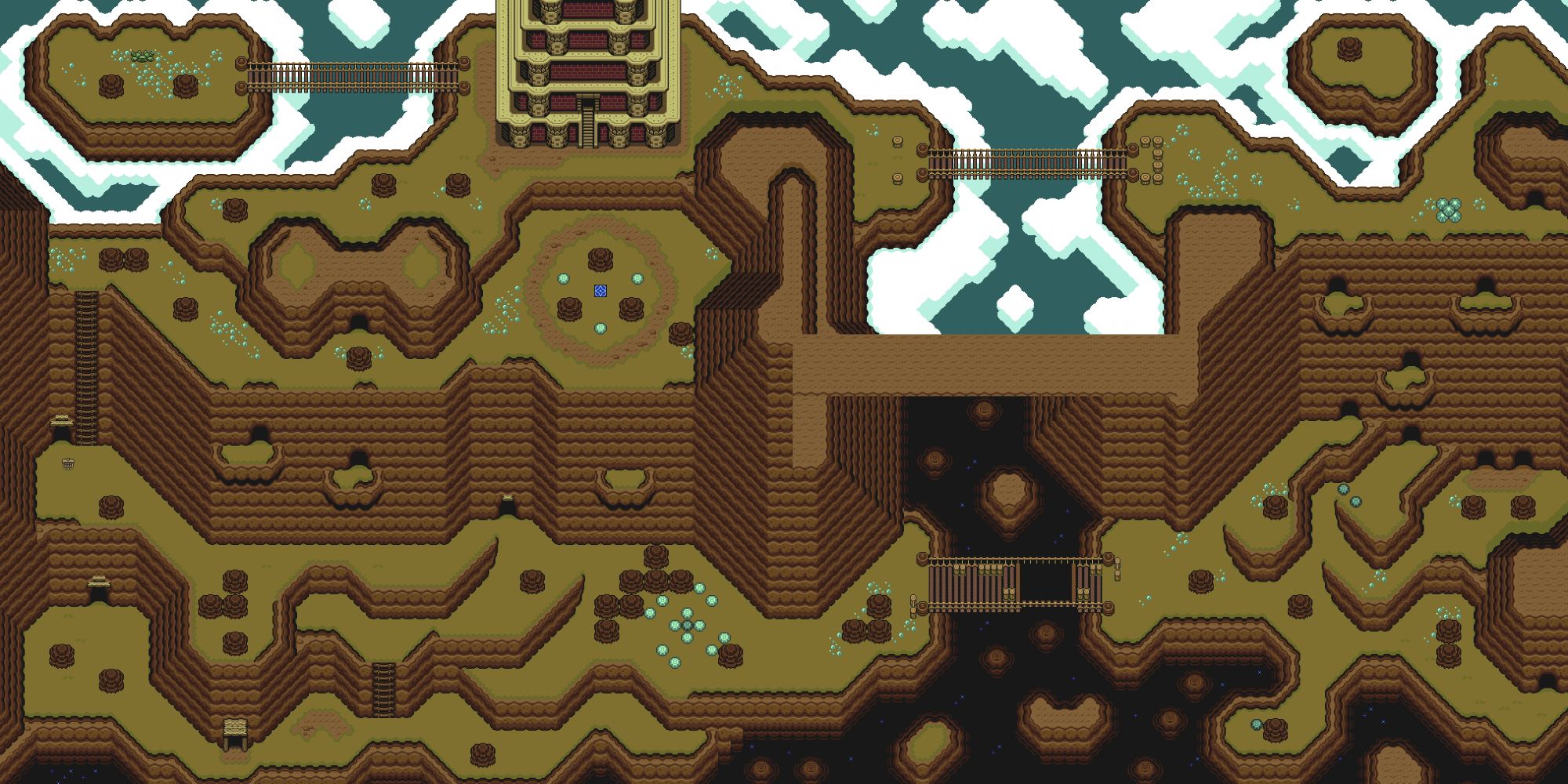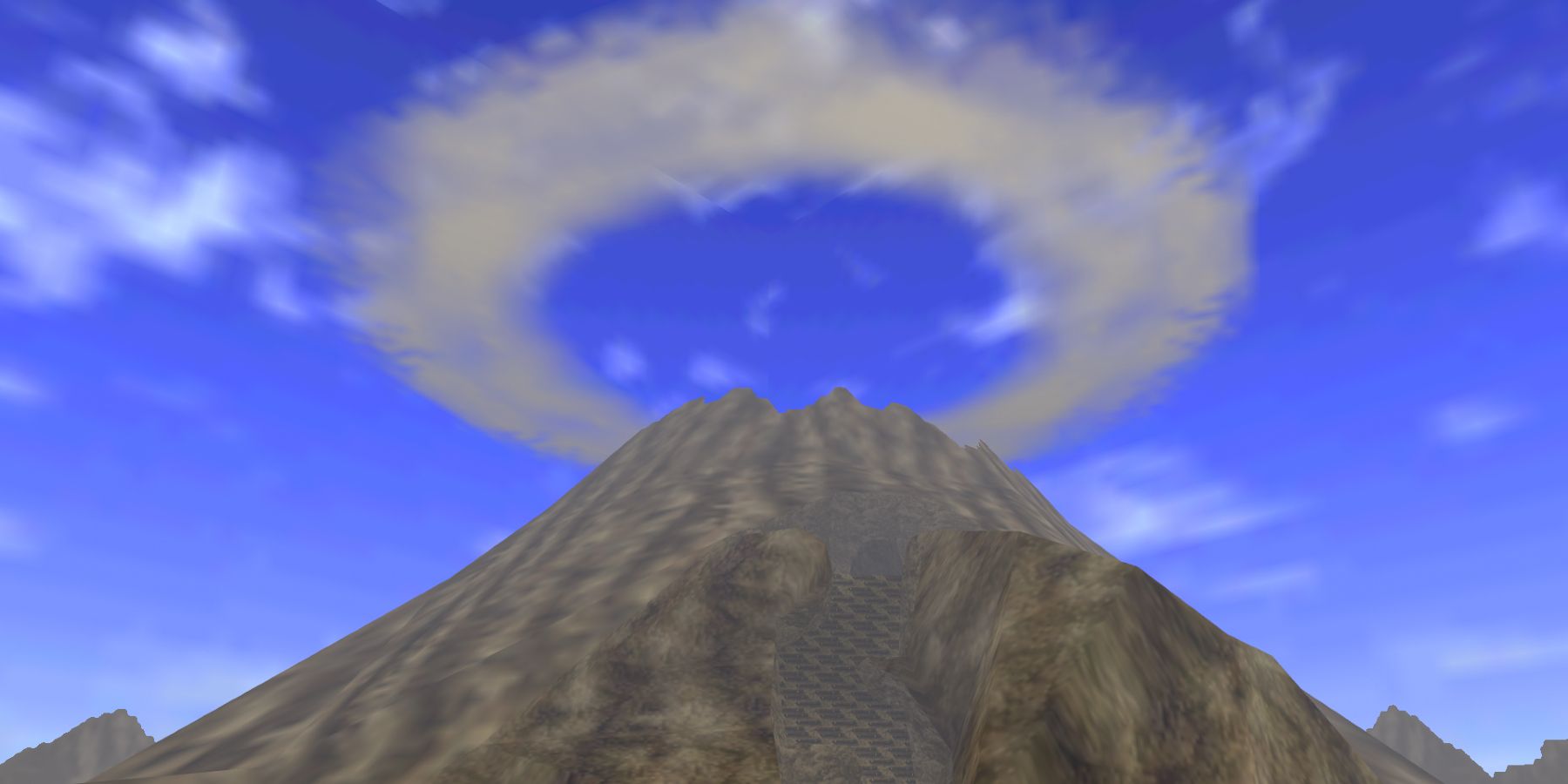The long history of The Legend of Zelda is one detailing the many eras of Hyrule, the kingdom within which most of the games take place. The Zelda timeline is confusing, and perhaps not altogether sensible, but it succeeds in contextualizing many disjointed narratives that share many similarities. The land of Hyrule itself often changes, but frequently includes recognizable landmarks, chief among them being Death Mountain, which has multiple iterations throughout the Zelda series.
Death Mountain appears in many Zelda games, and can often be seen from even the farthest reaches of Hyrule. In Ocarina of Time, the ring of fire encircling the peak is a foreboding backdrop after Hyrule has fallen under the power of Ganon. Breath of the Wild's version of Death Mountain towers in the northeast, its lava-covered slopes visible many miles away in the night. Whenever Death Mountain is included in a Zelda game, visiting it (and climbing it) is required to complete the game.
Death Mountain's name is incredibly ominous, and for good reason. The peak is often overrun with dangerous monsters and natural obstacles. It is usually home to at least one dungeon and sometimes contains even more important locations. Just like another iconic Zelda landmark, Lake Hylia, Death Mountain has been a part of the entire series, appearing in both the original TLOZ and the most recent, BOTW.
Early Depictions Of Zelda's Death Mountain
Death Mountain is a location of extreme importance in the first The Legend of Zelda. The mountain and its surrounding peaks make up most of the northern edge of the map, where two of the game's dungeons are housed. The fifth labyrinth that Link must enter is near Death Mountain, as well as TLOZ's final dungeon inside of Spectacle Rock, where Ganon resides. Both dungeons introduced features that would come to define later iterations of Death Mountain, namely deadly pools of lava and mountainous enemies such as Dodongos.
Zelda II: The Adventure of Link also featured Death Mountain, although it is much less prominent owing to the game's departure in design from its predecessor. A much larger game world was envisioned by Zelda 2, largely due to its adoption of an overworld map, with dungeon crawling transitioning to side-scrolling gameplay. An approximation of TLOZ's entire map can be found in the southwestern region of Zelda 2's Hyrule. Spectacle Rock makes a reappearance as well, with Link needing to travel there in order to retrieve a hammer. This landmark atop Death Mountain became a recurring element of the series in its own right.
Zelda's Death Mountain In A Link To The Past & A Link Between Worlds
In A Link to the Past and its spiritual successor, A Link Between Worlds, Death Mountain returns to the northern edge of Hyrule along with its signature peak, Spectacle Rock. Death Mountain is host to three of A Link to the Past's many dungeons, including the Tower of Hera in the Light World, with Turtle Rock and Ganon's Tower in the Dark World. Although ALTTP puts the final showdown against Ganon atop Death Mountain like in the original game, the mountain has much less prominence in A Link Between Worlds.
A Link Between Worlds' version of Death Mountain contains only two proper dungeons, including the return of the Tower of Hera. In the Hyrule of ALBW, Spectacle Rock is an active volcano, but in Lorule, Death Mountain is covered in snow, allowing for the Ice Ruins dungeon to exist. Also in Lorule, the Tower of Hera is replaced with the Treacherous Tower, a challenging dungeon that rewards Link for defeating multiple rooms full of enemies.
Zelda's Death Mountain As The Home Of The Gorons
The Legend of Zelda's transition to 3D in Ocarina of Time brought an important and lasting change to Death Mountain: the Gorons. Ocarina of Time's Death Mountain houses Goron City, a massive cavern carved out of the inside of the mountain. Goron City is near two dungeons in Ocarina: Dodongo's Cavern and the Fire Temple. Following their introduction in Ocarina, the Gorons became one of Zelda's recurring fictional races in Hyrule, often dwelling in Death Mountain, but not necessarily restricted to it. While Goron City is a safe haven, the Death Mountain Crater is too hot to explore without a Goron Tunic, with its pools of lava a testament to the area's dangers.
The Gorons would once again inhabit Death Mountain in Twilight Princess and are much less welcoming this time around. When Link first visits Death Mountain, it is actively erupting, spewing boulders that must be dodged. The Gorons are not letting any outsiders near their sacred Goron Mines, so they must be dealt with on the way up as well. Twilight Princess' Death Mountain only houses one dungeon inside of the aforementioned Goron Mines. The mining technology further cements the Gorons' affinity for metalwork, which began with Ocarina of Time's powerful Biggoron Sword.
This theme positioning the Gorons as proficient miners continues in the most recent depiction of Death Mountain in Breath of the Wild. Although covered in minecart tracks to help with transportation, BOTW's Death Mountain is the peak's most daunting version yet. Lava flows down from the summit and pools in the surrounding foothills, making it impossible to reach the lofty Goron City without the aid of heat-dampening elixirs. This Death Mountain is by far the largest and most explorable of any Zelda game and commands a dominant spot on Hyrule's horizon. Though the game has no proper dungeons, Death Mountain does host a handful of Ancient Shrines as well as one of Breath of the Wild's Divine Beasts, Vah Rudania.
Though much grander in appearance, these 3D versions of Death Mountain stay true to the image created by the classic Zelda games. Even enemies like the Dodongos have remained on Death Mountain since the first TLOZ. Each is integral to Link's journey, serving the broader role of being each game's fire-themed level. Death Mountain also appears as a more traditional, self-contained level in Four Swords and Four Swords Adventures. These do not include openly explorable areas in the usual Zelda sense, but each has their own bosses, and Four Swords Adventure's Death Mountain is made up of multiple stages. Skyward Sword's Eldin Volcano also serves as a precursor to Death Mountain as well.
Death Mountain entered The Legend of Zelda with the utmost importance - playing host to Ganon's first lair. 35 years later, Death Mountain remains a recognizable landmark in Hyrule, still bearing an important role in modern Zelda titles. What was once a singularly ominous mountain has become home to the Gorons, with a consistent theme but varying functions throughout its numerous appearance in The Legend of Zelda.




